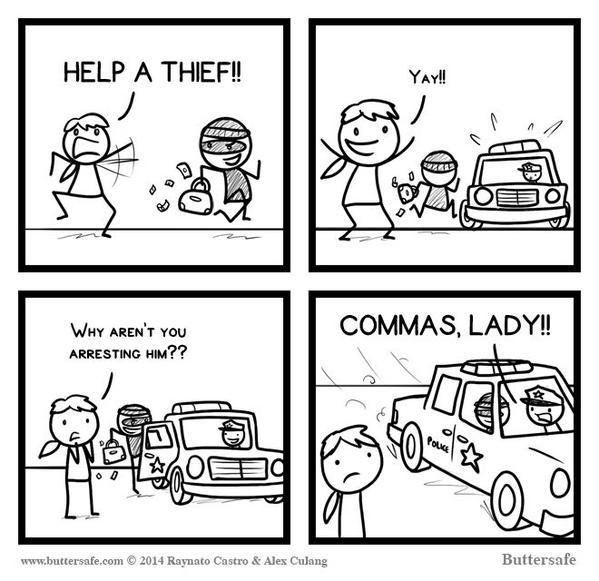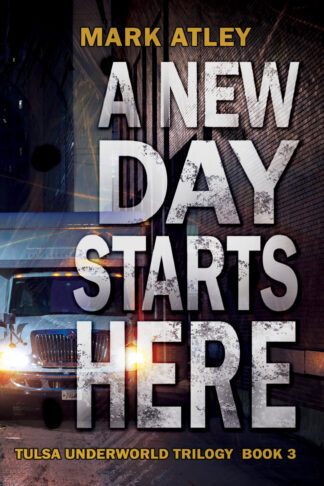
Do you find yourself adding commas to your document like throwing darts at a dartboard?
“Wherever they shall fall, there shall they remain!”
Please, for the sake of editors everywhere, just don’t.
Generally speaking, people tend to use commas one of two ways: throwing a bunch like darts and leaving them where they land or avoiding them completely and hoping it all works out. Neither is very efficient. Don’t even get me started on the old, “Use a comma when you would take a breath.” Have a professional singer and a lifetime smoker read the same sentence and see how accurate that method is. (It’s not!). Now, you can argue that sometimes the comma=pause will work, but only if you’re actually saying something that requires a comma–not because of the pause.
Now, what if I told you there was an easy way to master this small punctuation mark? I know it may sound wild, but there are actual rules that govern how and when you use a comma. In fact, these guidelines can be broken down into six (yes only six!!!) fundamental rules. If you don’t find yourself in one of these six situations, don’t add a comma!
Rule #1: Use commas when you start a sentence with a dependent clause.
If the sentence starts with a subordinating conjunction–wait, did I just curse at you in grammar? Okay, pause. Subordinating conjunctions are words that combine two complete sentences while implying their relationship (which part is dependent on the other part). These are words like because, until, although, since, when, while, where, and others like that. When you start a sentence with those words, you put a comma before the subject of the sentence (the word the sentence is about).
- Because English grammar is weird, we like to add commas to help facilitate comprehension.
- Until you understand how commas are supposed to work, you will remain confused about their usage.
- Since we’re now discussing commas, you can use them with more confidence.
Note: If you flip those sentences around and the subordinating conjunction is in the middle of the sentence, you do NOT use a comma.
- We like to add commas to help facilitate comprehension because English grammar is weird.
- You will remain confused about their usage until you understand how commas are supposed to work.
- You can use them with more confidence since we’re now discussing commas.
Rule #2: Use commas when you have two complete sentences connected with a FANBOY.
First, you need two complete sentences. To be complete, a sentence needs a subject and a verb. If both sentences are connected by a coordinating conjunction (for, and, nor, but, or, yet, so), you should put a comma before it. If you don’t have a coordinating conjunction between them, you can just use a semicolon. You can’t use just a comma by itself–that’s called a comma splice. Commas can do a lot of things (obviously), but they can’t connect two complete sentences without the help of a coordinating or subordinating conjunction. Basically, if there isn’t an extra because or and between your sentences, use a semicolon or a period instead.
- I love grammar, but I know that it can be ridiculous.
- Commas are amazing, and they can do so many wonderful things.
- Sometimes, commas feel like the best piece of punctuation, yet they do have limits.
Note: If the second part of your sentence doesn’t have a subject, do NOT use a comma.
- I love grammar but know it can be ridiculous.
- Commas are amazing and can do so many wonderful things.
- Commas can feel like the best piece of punctuation yet are still limited.
Rule #3: Use commas to separate non-essential information.
If your sentence has a group of words that can be removed without changing the fundamental meaning of the sentence, set it off with commas (a comma on both sides). This rule also includes extra information like parentheticals, transitions, and names in direct address.
- Commas, which are a versatile piece of punctuation, seem complicated.
- Commas seem complicated. The fact that they are versatile is interesting but not necessary to the gist of the sentence.
- The Oxford Comma, the comma before the word “and” in a list, is necessary to the meaning of the sentence.
- The Oxford comma is necessary to the meaning of the sentence. That is all.
- I know you mean well, of course, when you put commas in your work.
- I know you mean well when you put commas in your work.
Note: You do not need to put commas around information that is only one word.
- My co-author Beau Lake knows how to use commas properly.
- My husband Remi teases me about my dedication to the Oxford Comma.
- He arrived in June from Baltimore.
Rule #4: Put commas around introductory information of more than two words.
When you begin a sentence with a preposition phrase (any group of words starting with a preposition like in, of, with, to, by, under, etc.), you should put a comma before the subject of the sentence. This rule is different from Rule #1 because that deals with complete sentences (clauses) while this rule is for phrases (groups of words that do not have both a subject and a verb).
- When using commas, be sure to make sure you actually need one.
- Often in essays, writers will add commas where they aren’t necessary.
- In writing, commas can be used for many things!
Note: If you only have two words and the sentence is short, you can leave the comma out if you want.
- In 2020 4 Horsemen Publications was formed.
- Though I would probably just say, “4 Horsemen Publications was formed in 2020.”
Rule #5: Use commas around items in a list of three or more items.
When you list items in a sentence, put commas between the first few and also before the and. Yes, that’s the Oxford Comma–and it matters! (See image above for reasons why it matters.)
- Commas are used to set off non-essential information, show items in lists, and separate dependent clauses at the start of a sentence.
- You can have lists anywhere in a sentence–beginning, middle, or end–and it still works the same way!
- Editing, reading, and writing are three of my favorite activities!
Note: You do not use a comma when you only have two items.
- Either my laptop or my printer is having a stroke right now.
- I need to decide if I’m bringing my tablet or my laptop on vacation this weekend.
Rule #6: Weirdness (dates, names, addresses, contrast)
This is the catch-all rule for the rest of the stuff you may run into:
- Commas are also used between the elements of an address.
- Send payment to 300 West Road, Stanford, CT 06860.
- Commas also separate the elements of a date.
- The wedding was on December 12, 2004.
- If you say December 12th 2004, you do NOT need a comma. Wedding invitations everywhere–take note!
- The wedding was on December 12, 2004.
- Commas are used after answering a question with yes or no.
- No, I do not like this.
- Commas are used when addressing someone specific.
- Annie, where did you get your gun?
- Commas are needed after interjections like ah, oh, etc.
- Ah, this water is refreshing.
- Commas are also used to contrast.
- Harold, not Roy, is my favorite player.
And that’s it! If you are writing and it’s not one of those six situations listed above, you do NOT need to use a comma.





